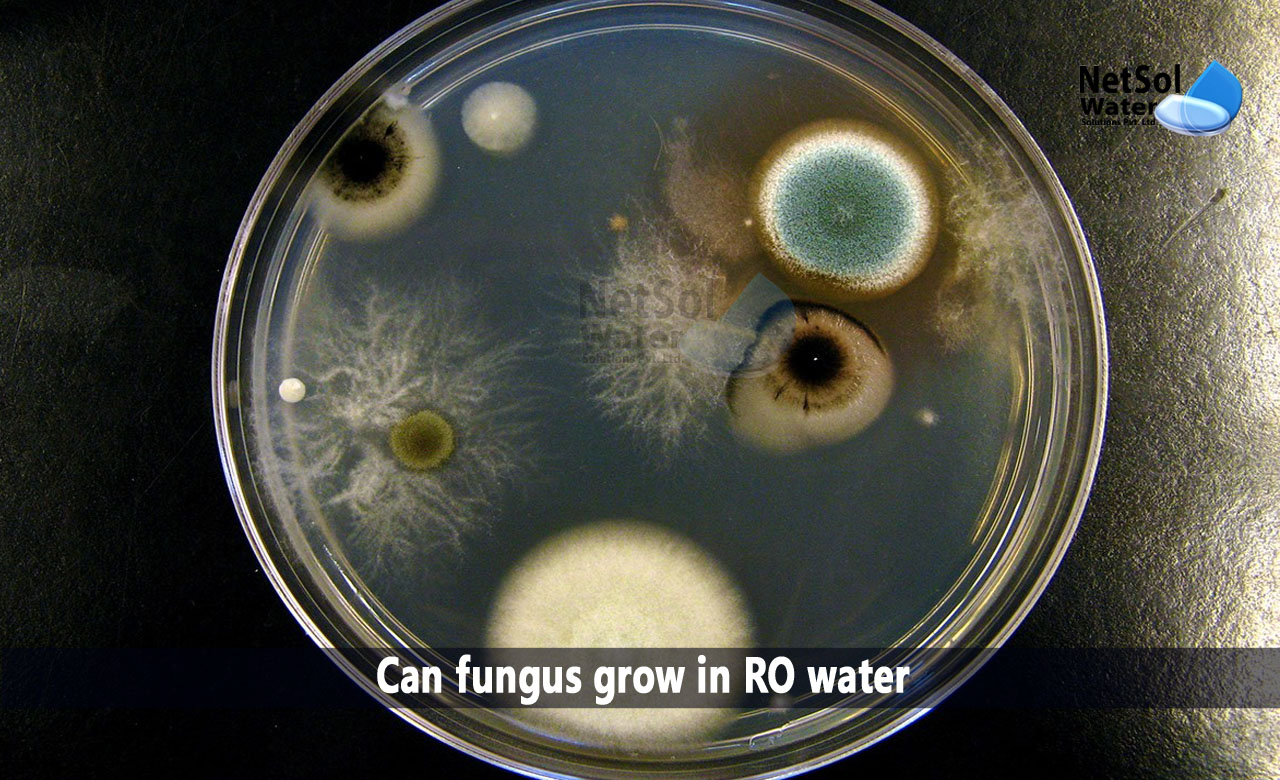Reverse osmosis is a reliable technique for purifying water of impurities and minerals. In RO Plants, very pure water is created using a semi-permeable membrane called as a TFC (Thin Film Composite) membrane. RO systems make use of the TFC membrane, a large metal storage tank lined with pressured rubber or flexible plastic, and a number of low-cost filters (sediment, granulated, or carbon). All RO systems should have efficient carbon pre-filters, and the majority employ a carbon post filter to enhance flavour because chlorine can harm the TFC membrane.
As we are aware that RO plant can remove TDS from drinking water, but the question arises! Can fungus grow in RO water! Let’s read this blog to get some details!
Types of fungi found in water
Fungi are to blame for allergic illness, localized infections that are both superficial and deep, pneumonia, brain abscesses, and widespread infections in healthy individuals. They can cause allergic fungal sinusitis and brain abscess in immune-compromised people.
What can happen if people consume fungus?
There are about 70 genera of fungus linked to sickness in humans. By preventing phagocytosis and cytokine synthesis, these fungi also affect the host immune system.
Water filters and filtered water tanks are perfect breeding grounds for fungi, a completely natural microbe that enjoys damp, wet environments, a moist, damp area with little to no airflow, which makes it the perfect place for mold to grow. The majority of the more than 1000 fungi are benign, however, Stachybotrys chartarum, sometimes known as black Toxic mold may develop in filtered water tanks. There is, however, little proof that drinking water can spread infection.
Can fungus grow in RO water?
The possibility of bacterial, fungal, and mold growth in the holding tank, on the membrane, and on the tank lining exists if a RO plant is not routinely cleaned and sterilized. Additionally, there is a risk of virus contamination in environments.
What should be done?
Reverse osmosis is a unique form of filtration that eliminates bigger particles, undesirable compounds, and ions from drinking water by passing only pure water through a semipermeable, porous membrane. To overcome pressure, an applied osmotic pressure is used. It is a thermodynamic metric known as the collinear property, which measures the proportion of solute to solvent particles in a solution, rather than chemical species.
The Granular Activated Carbon (GAC) filter of the RO Plants in reverse osmosis filtration captures chlorine, providing the user with chlorine-free, safe drinking water. Compared to chlorine, which only effectively kills bacteria, UV is particularly powerful in inactivating both bacteria and fungi.
How can we assist?
Together with our customers, Netsol Water Solutions develops specialized water treatment solution that satisfies the individual need of the customers, to help them preventing fungus growth on filtered water tanks by combining various water treatment products together, to filter water more efficiently.
We also provide various water treatment products which include Commercial RO Plants, Industrial RO Plants, Water Softeners, UV water purification systems, etc. For further information, contact us at +91 9650608473 or email at enquiry@netsolwater.com



